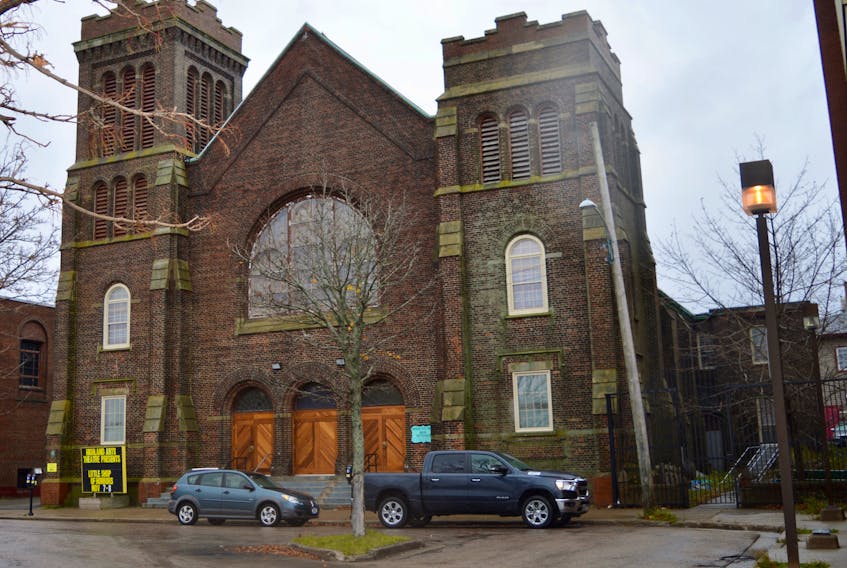Across Cape Breton and Nova Scotia, we’re throwing away historic buildings at an accelerating rate. It’s bad for community economic development, bad for our sense of place and bad for the environment.
Widely read author James Howard Kunstler called it “the geography of nowhere”: a big box mentality in place of unique architecture, parking lots in place of history and imported pre-fab in place of locally employed, skilled renovators.
We’re letting old buildings and re-usable materials fall into neglect and become demolition waste for lack of creativity and leadership.
Forcing ourselves to re-purpose or revitalize those buildings is a shot in the arm for development. In our region, we’ve seen good examples with the Highland Arts Theatre, with The Convent (New Dawn Centre), with plans for the former Sacred Heart Church, with the formerly vacant Liscomb House (which is now two housing units) and with some of the renovated company houses.
The recent illegal demolition of the circa-1760s Reid House in Avonport, Kings County, by Halifax development company Nanco generated headlines. Apparently, no artifacts were salvaged.
That property happened to be registered under Nova Scotia’s Heritage Property Act. Here in Cape Breton, we lose 200-year-old buildings without blinking an eye because, in most cases, no one has done the work of even listing them on a preliminary local heritage inventory, let alone formally registering them under the Act. They’re off the planning radar.
I am not calling for a spree of heavy-handed regulations. I am calling for early intervention – conversations with owners before plans are finalized or before historic buildings fall into complete disrepair.
Actually, heritage legislation is pretty light. Advantages to owners usually outweigh any burdens from regulations, which cover only exterior, substantial changes and are generally quite flexible. On the flip side, registration gives owners the ability to apply for modest grants. Plus, heritage status can often be leveraged for other funding because it officially highlights a property’s historical, architectural and cultural attributes.
In 2013, Whitney Pier’s Polish Village Hall was registered as a municipal heritage property. It’s owned by the St. Michael’s Polish Benefit Society (where I am currently serving as president). The society itself had asked for the designation. And we’re proud of it.
Similarly, I was delighted to see Dominion’s Italian Hall receive heritage registration at the Dec. 6 meeting of the council of the Cape Breton Regional Municipality. These are small but important steps in recognizing the region’s multicultural character.
Here in Cape Breton, we lose 200-year-old buildings without blinking an eye because, in most cases, no one has done the work of even listing them on a preliminary local heritage inventory, let alone formally registering them under the Act. They’re off the planning radar.
Formal registrations aside, municipalities that take heritage seriously have broader heritage inventories highlighting architecture, age, design, contribution to a streetscape or association with cultural communities or notable events.
Being on a list as a non-registered property does not create legal obligations, but it triggers a flag if plans come forward that would see the site obliterated. It allows members of a municipal heritage advisory committee (HAC) to at least have conversations with the owners.
Unfortunately, municipal HACs on Cape Breton Island are barely functioning. These committees are mandated by the province’s Heritage Property Act and usually consist of a mixture of councillors and appointed residents.
CBRM’s heritage advisory committee had a revival in 2005-2010. With the support of seasoned municipal planner Rick McCready, good work was done re-writing the heritage policy to no longer impose a fee on owners (!) who ask to have their property registered, to put in place a municipal heritage grant program (currently $55,000 a year), to catalogue historic places of faith and to establish the island’s first and only heritage conservation district — covering part of the north end of Sydney.
But in recent years, the HAC has been meeting only a couple of times a year. It’s not doing pro-active work. Outside the one heritage conservation district, there are merely 43 municipally registered properties in the entire CBRM. There is currently no work being done to build a regional heritage inventory beyond the registered sites, highlighting places of interest and concern.
It’s as if we’re losing pride in our communities, interest in our history and creative motivation to care for our places and spaces.
By contrast, communities that conserve historic places, renovate them and re-purpose them are usually communities that are using history to attract new investment and ideas.
Dr. Tom Urbaniak, professor of political science at Cape Breton University, is past chair of the National Trust for Canada, the national charity for historic places. He is co-editor, with Dr. Andrew Molloy, of the book "Company Houses, Company Towns: Heritage and Conservation."









